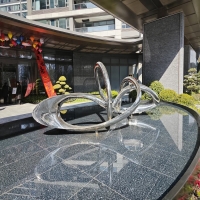Welcome to the website for landscape facilities products and knowledge.
What are the advantages and disadvantages of using synthetic wicker versus natural wicker in landscape sofas?
When choosing materials for landscape sofas, synthetic wicker and natural wicker are two popular options, each with distinct advantages and drawbacks.
Advantages of Synthetic Wicker:
1. Durability: Synthetic wicker, often made from resin or polyethylene, resists weathering, UV rays, and moisture, making it ideal for outdoor use.
2. Low Maintenance: Unlike natural wicker, it doesn’t require sealing or frequent cleaning, saving time and effort.
3. Consistency: Synthetic wicker offers uniform color and texture, ensuring a polished look over time.
Disadvantages of Synthetic Wicker:
1. Aesthetic Limitations: It may lack the organic charm and uniqueness of natural wicker.
2. Environmental Impact: Most synthetic wicker is plastic-based, raising sustainability concerns.
Advantages of Natural Wicker:
1. Eco-Friendly: Made from rattan or bamboo, it’s biodegradable and renewable.
2. Authentic Appeal: Its natural texture and variations add rustic elegance to outdoor spaces.
Disadvantages of Natural Wicker:
1. High Maintenance: It requires regular sealing and protection from moisture to prevent cracking or mold.
2. Less Durable: Prolonged exposure to sun and rain can degrade natural fibers faster than synthetic alternatives.
Ultimately, the choice depends on priorities: synthetic wicker for durability and ease, or natural wicker for sustainability and timeless beauty.
Related search:

Recommendation
Abstract art sculpture, stainless steel metal sculpture, large-scale water feature sculpture